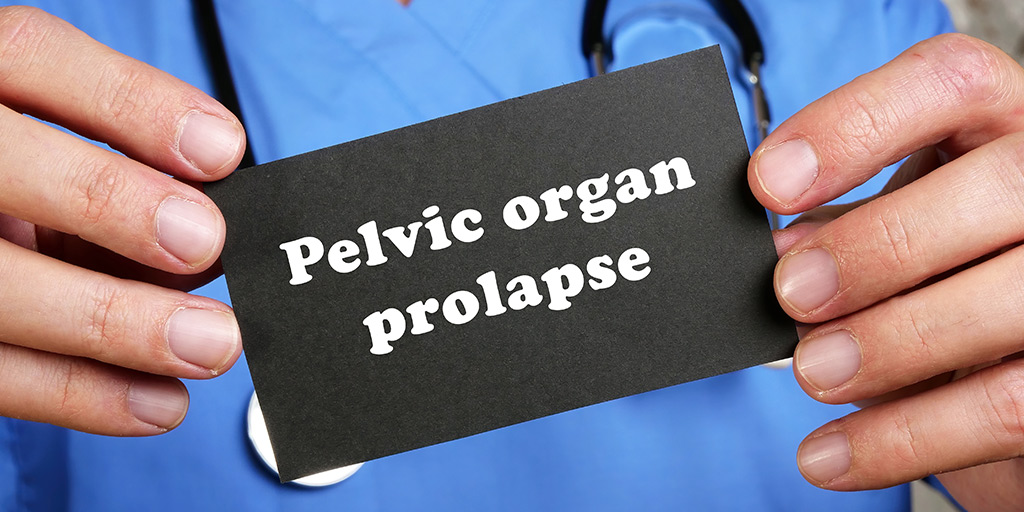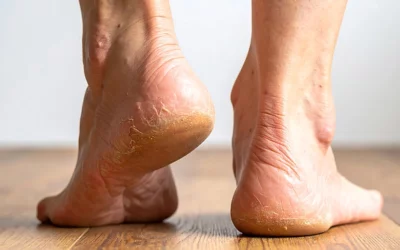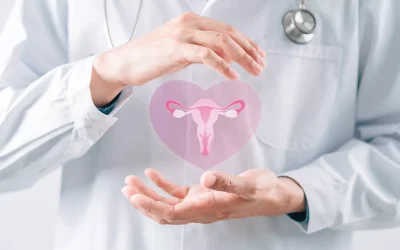Pelvic Prolapse after Childbirth: Why it Happens and What to Do

Pelvic prolapse, also known as pelvic organ prolapse, is a condition in which organs such as the uterus, bladder, or rectum descend into the vaginal canal due to weakened pelvic floor muscles and supporting tissues. It is one of the common childbirth complications that many women experience after pregnancy, especially following vaginal delivery. The stretching and pressure during pregnancyand labour can significantly impact pelvic support, leading to discomfort, a sense of heaviness, or visible bulging. While this condition may feel distressing, it is treatable with timely medical care, lifestyle adjustments, and supportive therapies. In this article, we will explore the causes of pelvic organ prolapse after childbirth, the symptoms to watch for, treatment options available, and preventive measures that can help restore the health of pelvic muscles. Let’s start by understanding the types of pelvic prolapse.
Table of Contents
ToggleWhat are the Types of Pelvic Prolapse?
Pelvic organ prolapse can affect different organs, and the condition is categorised based on the area involved. The main types include:
- Uterine prolapse: When the uterus descends into the vaginal canal due to weakened support structures. It may present with specific uterine prolapse symptoms such as heaviness, back pain, or bulging.
- Cystocele (bladder prolapse): The bladder bulges into the front wall of the vagina, often leading to urinary leakage or difficulty in emptying the bladder.
- Rectocele (rectal prolapse into the vagina): The rectum pushes into the back wall of the vagina, which can cause bowel-related difficulties and sometimes constipation.
- Vaginal vault prolapse: Occurs after hysterectomy when the top of the vagina loses its support and drops down.
Doctors may also describe prolapse by severity, such as the stages of uterine prolapse, ranging from mild descent to advanced bulging. Understanding these types is important as treatment approaches may differ depending on the organs involved.
Why Does Pelvic Prolapse Happen After Childbirth?
Childbirth places significant stress on the pelvic floor, and in some women, this can lead to pelvic prolapse. Factors that can increase the risk of pelvic prolapse during delivery include:
- Weakening of pelvic floor muscles: The weight of pregnancy and the strain of labour can stretch and weaken the muscles that support the pelvic organs.
- Vaginal delivery risks: Vaginal birth, especially when the baby is large, may cause more pressure on the pelvic tissues compared to caesarean birth.
- Forceps or prolonged labour: Assisted deliveries or long hours of pushing can damage nerves and connective tissues in the pelvic region.
- Multiple childbirths: Having more than one vaginal delivery increases the chances of pelvic prolapse, as repeated stretching weakens support structures over time.
Recognising these risk factors can help in planning timely preventive steps and appropriate postpartum care.
What Are the Symptoms of Pelvic Prolapse?
Pelvic prolapse, sometimes called pelvic floor prolapse, can present with a range of symptoms, which may become more noticeable during physical activity or by the end of the day. Common signs include:
- Feeling of heaviness or pressure in the pelvis: A dragging sensation, especially when standing for long periods.
- Bulging tissue in the vagina: Some women notice or feel tissue protruding through the vaginal opening.
- Urinary leakage or difficulty urinating: Problems such as stress incontinence or incomplete bladder emptying.
- Lower back pain: Discomfort that worsens with exertion.
- Discomfort during sex: Pain, reduced sensation, or pressure affecting intimacy.
These uterine prolapse symptoms and bladder or bowel-related difficulties should not be ignored. Seeking a timelymedical evaluation ensures appropriate treatment before the condition progresses.
Who is at Higher Risk of Pelvic Prolapse?
While pelvic prolapse can happen to any woman after childbirth, certain factors increase the likelihood of developing the condition:
- Women with multiple vaginal births: Repeated stretching of the pelvic floor raises the risk.
- Obesity or chronic coughing: Excess weight or continuous pressure from coughing weakens support structures over time.
- Family history of prolapse: Genetic predisposition can make connective tissues less resilient.
- Age and hormonal changes: As oestrogen levels drop during perimenopause or menopause, tissues lose elasticity, increasing vulnerability.
Identifying these risks allows women to take preventive steps and seek specialist advice early.
What Are the Treatment Options for Pelvic Prolapse?
Treatment depends on the severity of symptoms, the type of prolapse, and overall health. Both non-surgical and surgical approaches are available:
Non-surgical options:
- Kegel and pelvic floor exercises: Regular exercises strengthen the pelvic muscles and improve support.
- Physiotherapy and lifestyle changes: Guided pelvic floor physiotherapy, weight management, and avoiding heavy lifting can ease symptoms.
- Vaginal pessary devices: A silicone device inserted into the vagina provides support to hold organs in place, offering relief without surgery.
Surgical options:
- Pelvic prolapse repair surgery: Restores support by repairing weakened tissues or using mesh in severe cases.
- Hysterectomy: In advanced uterine prolapse, removal of the uterus may be recommended if childbearing is complete.
With proper medical guidance, women can choose the pelvic prolapse treatment best suited to their condition and lifestyle needs.
When to Get Help for a Prolapse
It is important to seek medical advice if pelvic prolapse symptoms begin to interfere with daily life. Early consultation with a gynaecologist ensures timely diagnosis and management, preventing complications and improving long-term recovery.
Seek medical attention if you face:
- Persistent feeling of a bulge or heaviness in the vagina
- Difficulty emptying the bladder or bowels
- Pain or discomfort during sexual activity
- Worsening urinary leakage or repeated infections
Early consultation with a gynaecologist near you ensures timely diagnosis and management, preventing complications and supporting long-term recovery.
What Are the Complications of Prolapse?
If left untreated, pelvic prolapse can gradually worsen and lead to additional health concerns. Possible complications include:
- Urinary problems: Recurrent infections, retention, or incontinence.
- Bowel issues: Difficulty passing stools or incomplete evacuation.
- Sexual discomfort: Pain, dryness, or reduced satisfaction during intercourse.
- Worsening prolapse: The condition may progress over time, making treatment more complex.
Addressing prolapse early not only relieves symptoms but also prevents these complications from affecting quality of life.
How Can You Prevent Pelvic Prolapse After Childbirth?
While not every case can be prevented, certain steps after delivery can reduce the risk of developing pelvic prolapse:
- Strengthening pelvic floor muscles early: Begin gentle pelvic floor exercises (Kegels) soon after delivery, as advised by a pelvic pain doctor.
- Avoiding heavy lifting postpartum: Reduces unnecessary strain on the pelvic region.
- Maintaining healthy weight: Helps minimise pressure on the pelvic floor.
- Regular gynaecologist visits: Early evaluation ensures any weakness or prolapse is detected and managed promptly.
Why Choose Graphic Era Hospital for Pelvic Prolapse Treatment?
At Graphic Era Hospital, Dehradun, we understand how pelvic prolapse after childbirth can affect both physical comfort and emotional wellbeing of the mother. Our team is committed to providing personalised care that helps women recover with confidence. We provide:
- Experienced Specialists: Our gynaecologists and urogynecologists bring years of expertise in managing all stages of prolapse, tailoring treatment plans to individual needs.
- Advanced Technology and Minimally Invasive Procedures: From advanced imaging for accurate diagnosis to laparoscopic and minimally invasive surgeries, we ensure safer treatments with faster recovery.
- Comprehensive Rehabilitation and Personalised Care: Beyond medical treatment, we support postpartum recovery through pelvic floor physiotherapy guided by expert physiotherapists, lifestyle guidance, and ongoing follow-up care.
With the right blend of clinical excellence and compassionate support, we ensure every woman feels safe, heard, and cared for throughout her recovery journey.
Closing Note
Pelvic prolapse after childbirth is a common condition, but it does not have to limit quality of life. With early diagnosis, the right treatment, and supportive care, most women recover well and regain comfort in their daily activities. At Graphic Era Hospital, Dehradun, specialists combine advanced medical expertise with compassionate support to ensure safe, effective, and personalised care for every woman. To consult a gynaecologist for pelvic organ prolapse treatment, call 1800-889-7351, and the team at Graphic Era Hospital will guide you through the next steps with complete care and support.
Frequently Asked Questions
What is pelvic prolapse after childbirth?
Pelvic prolapse, also known as pelvic organ prolapse, happens when organs such as the uterus, bladder, or rectum drop into the vaginal canal due to weakened pelvic floor muscles. Childbirth, especially vaginal delivery, is one of the most common causes.
Can pelvic prolapse happen after a C-section?
Although it is more common after vaginal delivery, pelvic prolapse can still occur after a C-section because pregnancy itself stretches the pelvic floor and pelvic girdle tissues.
What are the first signs of pelvic organ prolapse?
Early symptoms include a feeling of heaviness in the pelvis, bulging tissue in the vagina, urinary leakage, or pelvic pain. Some women also notice discomfort during sex.
Can pelvic prolapse heal on its own after delivery?
Mild prolapse may improve with time, pelvic floor exercises, and physiotherapy. However, persistent or severe symptoms should be evaluated by a gynaecologist near me for proper pelvic organ prolapse treatment.
What exercises help in pelvic floor recovery after childbirth?
Kegel exercises and pelvic floor physiotherapy strengthen the pelvic floor muscles, improve bladder control, and support postpartum recovery.
Do I always need surgery for pelvic prolapse?
Not always. Non-surgical options such as physiotherapy, pessary devices, and lifestyle changes are effective for many women. Surgery for pelvic prolapse is considered if symptoms are severe or conservative options do not help.
Is pelvic prolapse painful during sex?
Yes, some women may experience discomfort, pressure, or reduced sensation during intercourse due to uterine prolapse or vaginal wall prolapse. Treatment helps improve sexual health and quality of life.
Where can I find pelvic prolapse treatment near me in Dehradun?
Graphic Era Hospital, Dehradun, offers advanced pelvic organ prolapse treatment, including minimally invasive surgery, physiotherapy, and personalised postpartum recovery tips.
How long is recovery after prolapse surgery?
Recovery time varies depending on the type of surgery. In most cases, women return to normal activities within 4–6 weeks, with full pelvic floor healing taking a few months.
By Specialities
- Bariatric Surgery
- Cancer Care
- Cardiology
- Dental
- Dermatology
- Diabetes & Endocrinology
- Endocrinology and Diabetes
- ENT (Ear Nose Throat)
- Eye Care
- Gastroenterology
- Haematology
- Health Care
- Health Tips
- Hematology
- Hepatology
- Internal Medicine
- Mental Health and Behavioural Sciences
- Metabolic
- Neonatology
- Nephrology
- Neurology
- Nutrition & Dietetics
- Obstetrics & Gynaecology
- Oncology
- Ophthalmology
- Orthopaedics
- Paediatric
- Physiotherapy & Rehabilitation
- Plastic and Reconstructive Surgery
- Psychology
- Pulmonology
- Rheumatology
- Spine
- Urology
Recent Posts
- Strep Throat Treatment: Home Remedies and Effective Medical Care
- Does Cracking Your Knuckles Cause Arthritis?
- Understanding Bronchiolitis: A Complete Guide for Parents
- Understanding Sinusitis: Types, Symptoms, and Treatment Options
- What Causes a Sudden Drop in Blood Pressure? Know the Symptoms Before It’s Too Late
Need expert medical advice?
Share your details and our healthcare specialists will reach out to assist you.
By proceeding, you acknowledge and agree to our Privacy Policy, Terms of Use, and Disclaimer.




















